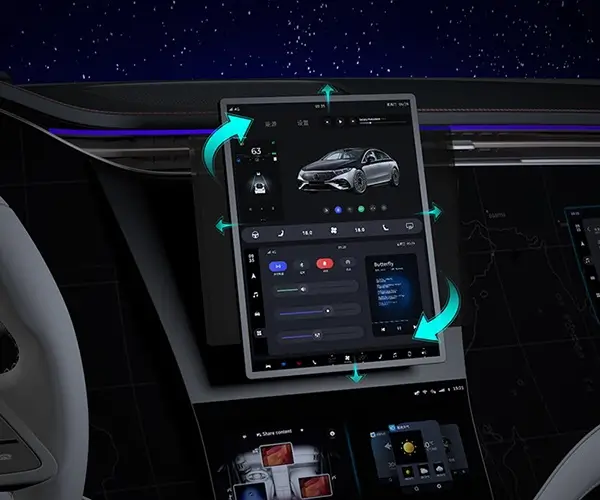Unlocking Precision: The Art and Science of Control of Servo Motor
In the rapidly evolving landscape of automation and robotics, servo motors stand out as the crown jewels, offering unparalleled precision and control for a myriad of applications—from industrial machinery and robotics to aerospace and consumer electronics. But what makes these tiny powerhouses so remarkable? And how do engineers tap into their potential by mastering their control? To appreciate the intricacies, we first need to understand what a servo motor is and what makes it different from other types of electric motors.

What is a Servo Motor? At its core, a servo motor is a rotary or linear actuator that allows for precise control of angular or linear position, velocity, and acceleration. Unlike traditional motors that run continuously at a set speed, servo motors are designed to respond accurately to commands, adjusting their position based on input signals. This feature makes them indispensable in environments where precision is paramount, such as robotic arms assembling microchips or camera autofocus systems.
Most servo motors consist of a small DC motor coupled with a feedback device—usually an encoder or a potentiometer—that continually monitors the motor's actual position. This feedback is sent back to the control system, enabling closed-loop operation: the system compares the desired position with the actual position and makes real-time adjustments.
Understanding Servo Control Systems The core principle behind servo control is the closed-loop feedback system. Here, the control unit sends a command—say, rotate to a certain angle—and the motor responds. The encoder reports the current position back to the controller, which then computes how much correction is needed. The system reacts by adjusting the power supplied to the motor, aligning it with the target position.
This feedback loop must be swift and accurate to ensure smooth and precise motion. Any delay or inaccuracy can cause oscillations, overshoot, or sluggish response, limiting the servo’s performance. Therefore, the design and tuning of the control algorithms are vital.
Basics of Control Algorithms At this juncture, it’s helpful to group the control methods into three main categories:
Open-Loop Control: The simplest form of control, where commands are issued without feedback. While easy to implement, these systems lack precision, as they cannot compensate for load variations or external disturbances.
Closed-Loop (Feedback) Control: Here, sensors constantly feed back the position to the controller, which adjusts power accordingly. Most servo systems operate under this principle, enabling high accuracy.
Advanced Control Techniques: These include proportional-integral-derivative (PID) control, fuzzy logic, model predictive control (MPC), and adaptive algorithms that optimize performance under varying conditions.
The Power of PID Control in Servo Motors Among these, PID controllers are most prevalent due to their simplicity and effectiveness. They modulate the control signal based on three parameters:
Proportional (P): Reacts proportionally to the current error—the difference between desired and actual position. Integral (I): Accounts for the accumulation of past errors, helping eliminate steady-state errors. Derivative (D): Anticipates the future trend of errors, providing damping and reducing overshoot.
Tuning these parameters correctly ensures the servo motor responds swiftly without oscillating or overshooting its target, creating a smooth and stable motion profile.
Control Hardware and Signal Types Servo motors usually receive control signals in the form of Pulse Width Modulation (PWM) signals, where the width of the pulse corresponds to the desired position. The control circuitry interprets these signals and uses the feedback to maintain the correct position.
In industrial applications, more sophisticated control is achieved through digital signal processors (DSPs) or microcontrollers that encapsulate the control algorithms into firmware. These embedded systems process sensor data at high speeds, making real-time adjustments feasible.
Applications of Servo Control The versatility of precise servo control is evident across various domains. In robotics, servo motors enable articulated arms to perform delicate, coordinated movements. In aerospace, they maneuver aircraft surfaces with tiny increments of control. In consumer electronics, they power autofocus systems in cameras, ensuring sharp images every shot.
Furthermore, in manufacturing, servo-driven CNC machines and pick-and-place robots rely heavily on advanced control algorithms to maintain precision over complex, multi-axis movements. The ability to control multiple servos simultaneously, synchronously, is crucial for seamless operation.
Challenges in Servo Control Despite their advantages, servo control systems face challenges—such as backlash (gear slack), non-linearities, temperature variations, and load changes—that can impair accuracy. Overcoming these issues often involves sophisticated control strategies, model-based control, compensation techniques, or even artificial intelligence.
The Future of Servo Control Looking ahead, developments in machine learning and adaptive control are poised to make servo systems smarter, more responsive, and resilient to disturbances. Integrating sensors like inertial measurement units (IMUs) and advanced algorithms could one day allow servo systems to self-tune, optimize performance in real-time, and handle complex tasks previously thought impossible.
In the next part, we'll delve deeper into specific control techniques, real-world examples, and emerging trends shaping the future of servo motor control.
Leveraging innovations in modular drive technology, Kpower integrates high-performance motors, precision reducers, and multi-protocol control systems to provide efficient and customized smart drive system solutions.




































